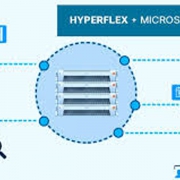The premise of multi-cloud is simple: rather than commit to a single cloud service provider (CSP) or hardware vendor, use whatever works for the occasion. A multi-cloud organization may have a dozen SaaS, IaaS and PaaS services distributed across its teams and various departments, none of them related or cobbled into any kind of order.
While this may seem like a nightmare for CISOs and CTOs, the truth is that multi-cloud was always inevitable, and erupted into the enterprise spontaneously as project heads and software engineers took it upon themselves to adopt cloud when leaders were failing to do so.
Multi-Cloud: The Hottest Game in IT
Given its history, what reason could convince organizations to adopt multi-cloud as a formal strategy? There are actually many good ones:
- Avoid vendor lock in – traditional cloud architecture involves choosing a cloud service provider (CSP) or – in the case of private cloud – hardware vendor, and this causes headaches when a company wants to switch. Multi-cloud permits seamless flexibility.
- Best-of-breed – no provider specializes in everything, and some CSPs are superior for different applications. A multi-cloud strategy allows companies to pick the best every time, and this is the same reason many choose a multi-vendor IT strategy.
- Data Sovereignty – organizations are often bound by law or contract to store certain information in a specific jurisdiction. Multi-cloud enables this level of fine-grained storage control without sacrificing the versatility of cloud.
- Superior security – it might seem that multiple, compartmentalized cloud services would pose a security risk. While this is true in some ways (as we will soon discuss), multi-cloud protects against DDoS and other attacks by distributing eggs among many different baskets.
In fact, the merits of multi-cloud are so persuasive that it’s no longer the province of rogue employees, but the hottest strategy in IT. In 2017, IDC predicted that 85% of enterprises would adopt a multi-cloud portfolio by 2018 – and so far, those numbers have been accurate.
Challenges for Multi-Cloud Adoption
In spite of the benefits, adopting a multi-cloud strategy is not without challenges or risks. In the first place, governing a multi-cloud ecosystem is a complex task which can leave organizations with security risks.
When new cloud platforms are brought into an organization from the outside, they constitute a form of “shadow IT” – hidden infrastructure that lacks scrutiny or oversight, and cannot be held to high standards for compliance.
In the second place, organizations who wish to pursue multi-cloud as a strategy are often left confused. The CSP market is vast; determining what to invest in and how to use it becomes a significant struggle.
So, what’s the solution?
Multi-Cloud Governance with Cisco’s MultiCloud
In November of 2017, Cisco announced the MultiCloud Portfolio, an addition to its lineup of cloud services specifically designed to help organizations plan and deploy viable multi-cloud architecture.
To describe it in a sentence, MultiCloud Portfolio channels the chaos of multi-cloud into an organized framework that can be centrally monitored and governed. The product helps across several key areas:
- Strategy – Cloud Advisory helps companies to research different cloud options and create a roadmap of the best investments for maximum benefits.
- Governance – with Cloud Connect, organizations can create a single WAN fabric to unify clouds and extend private networks. It also permits the creation of network, security and app policies extending across clouds
- Security – Cloud Protect allows admins to enforce compliance, secure sensitive data, protect direct-to-cloud connectivity and configure authentication for user access across laptops and mobile devices
- Operations – Cloud Consume enables the easy deployment of containers and applications across a multi-cloud environment, and user behavior analysis.
Last year, Cisco also released MultiCloud hyperflex, providing the same multi-cloud features with a hyperconverged layer. With Hyperflex, organizations can configure and deploy virtual server environments, native and containerized apps across cloud providers.
This is an exciting time for the cloud industry: adoption has never been higher, and the tools that make it all possible have never been better. In particular, the state of multi-cloud represents a gold standard for IT infrastructure which has never been more affordable.
Professional Cisco Support in Northern Virginia
Located near the booming data center corridor in Loudon County, VA, Digital Tech Inc provides rapid response maintenance services including EOSL extension, spare parts, short- and long-term maintenance agreements, migration assistance and depot repair options. Our skilled engineers offer multi-vendor support, covering IBM, HP, Dell EMC, Cisco, NetApp, and many more.
To learn more, contact us today.






